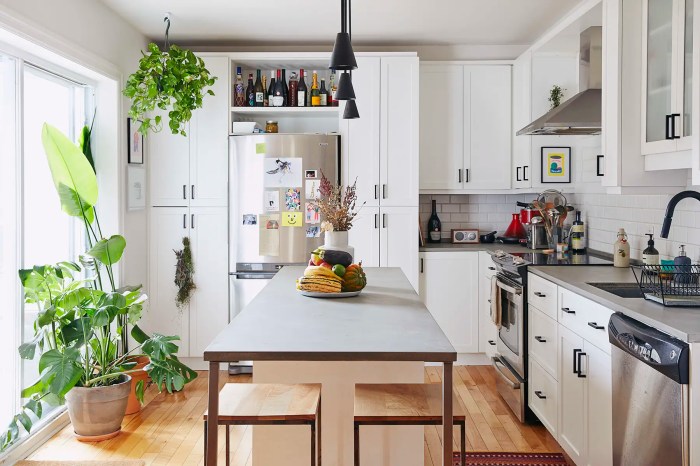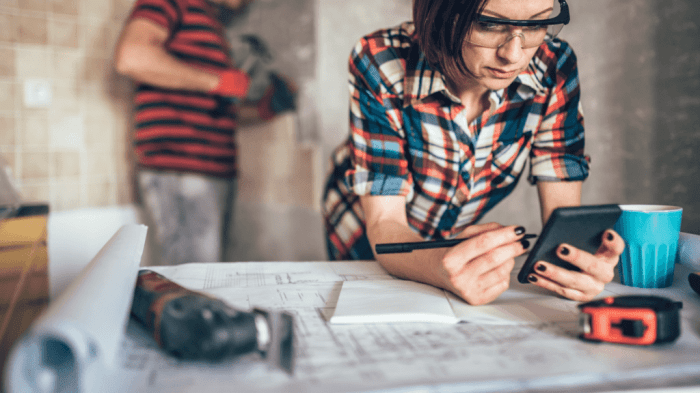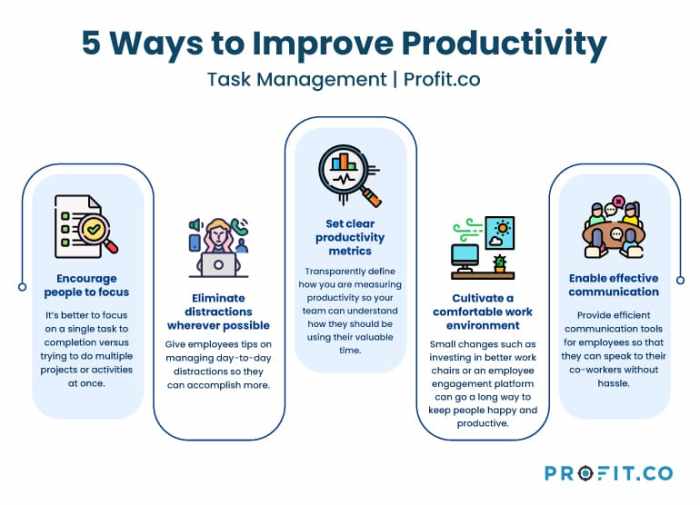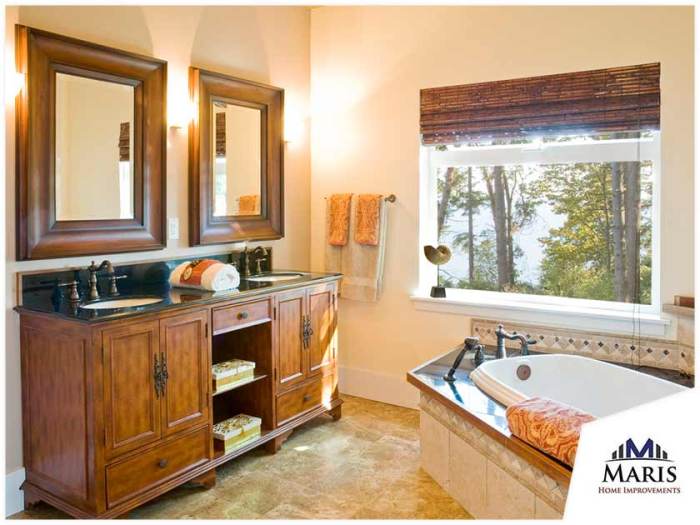
Dreaming of a luxurious bathroom oasis but worried about the cost? Don’t let budget constraints hold you back! Remodeling your bathroom doesn’t have to break the bank. With careful planning, creative DIY solutions, and smart shopping strategies, you can transform your bathroom into a haven of relaxation and style without sacrificing your financial well-being.
This guide will equip you with the knowledge and tools to navigate the bathroom remodeling process, offering practical tips and strategies to maximize your budget while achieving your desired aesthetic. Whether you’re a seasoned DIYer or a novice, this comprehensive resource will empower you to make informed decisions, avoid costly mistakes, and create a bathroom that reflects your personal style and meets your needs.
Planning and Budgeting
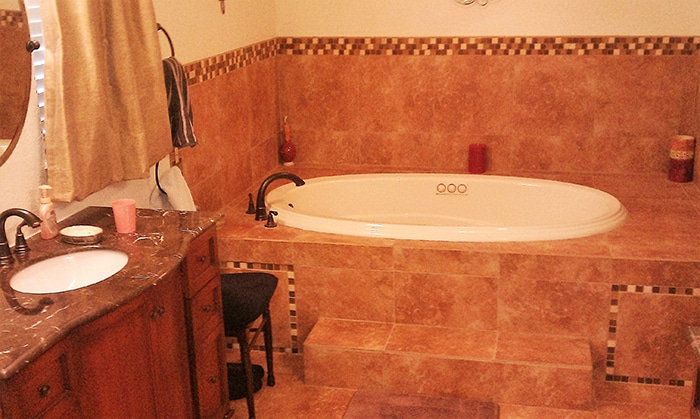
A well-structured budget is crucial for a successful bathroom remodel. It helps you stay within your financial limits and prevents unexpected costs from derailing your project.
Budgeting for Bathroom Remodeling
A detailed budget should include all aspects of the remodel, from materials and fixtures to labor costs. You can use online budgeting tools or create your own spreadsheet. Remember to factor in:
- Materials: This includes everything from tile and flooring to cabinets and countertops.
- Fixtures: This includes the toilet, sink, showerhead, bathtub, and other bathroom fixtures.
- Labor: If you’re hiring a contractor, factor in their labor costs.
- Permits: Some remodeling projects require permits, so factor in those costs.
- Contingency: It’s always wise to have a contingency fund for unexpected costs.
Prioritizing Bathroom Remodeling Projects
Prioritize your bathroom remodeling projects based on your budget and needs. Consider which projects will provide the most value for your money and have the biggest impact on your bathroom’s functionality and aesthetics. For example, if you have a limited budget, focus on:
- Updating fixtures: Replacing an outdated toilet or showerhead can significantly improve your bathroom’s functionality and appearance.
- Repainting: A fresh coat of paint can make your bathroom feel new and refreshed.
- Replacing flooring: If your bathroom floor is worn or outdated, replacing it can make a big difference.
Estimating Costs for Bathroom Remodeling Projects
Here’s a table with common bathroom remodeling projects and their estimated costs:
| Project | Estimated Cost | DIY Potential | Potential Savings |
|---|---|---|---|
| Toilet Replacement | $200 – $1,000 | High | Up to 50% |
| Sink Replacement | $100 – $500 | Medium | Up to 30% |
| Showerhead Replacement | $20 – $100 | High | Up to 80% |
| Cabinet Refacing | $1,000 – $3,000 | Medium | Up to 40% |
| Floor Tile Replacement | $500 – $2,000 | Medium | Up to 30% |
| Bathroom Vanity Replacement | $500 – $2,000 | Medium | Up to 30% |
Remember: These are just estimates. Actual costs may vary depending on the size and complexity of your project, the materials you choose, and your location.
DIY vs. Hiring Professionals
Remodeling a bathroom can be a significant undertaking, and the decision of whether to tackle the project yourself or hire professionals is a crucial one. This section will delve into the pros and cons of each approach, helping you make an informed decision that aligns with your skills, budget, and time constraints.
Comparing DIY and Professional Bathroom Remodeling
Choosing between DIY and hiring professionals depends on several factors, including your experience, available time, and budget.
- DIY Pros:
- Cost savings: DIY can significantly reduce the overall project cost, as you eliminate labor fees.
- Customization: You have complete control over the design, materials, and execution of the project, allowing for personalized touches.
- Sense of accomplishment: Successfully completing a bathroom remodel can be a rewarding experience, providing a sense of pride and satisfaction.
- DIY Cons:
- Time commitment: DIY projects require significant time and effort, potentially delaying the completion of your bathroom remodel.
- Skill requirements: Certain tasks, like plumbing and electrical work, require specialized knowledge and experience. Attempting them without proper training can lead to costly mistakes and safety hazards.
- Potential for mistakes: Lack of experience can result in errors that may require professional intervention to fix, adding to the overall cost.
- Hiring Professionals Pros:
- Expertise: Professionals have the knowledge, skills, and experience to handle complex tasks efficiently and safely.
- Time efficiency: Professionals can complete the project faster, minimizing disruption to your daily routine.
- Warranty and insurance: Many professionals offer warranties on their work and carry insurance to protect you in case of accidents or unforeseen circumstances.
- Hiring Professionals Cons:
- Higher cost: Hiring professionals adds significant labor costs to the overall project budget.
- Limited customization: You may have less control over design choices and materials if you rely entirely on a professional contractor.
- Potential for scheduling delays: Finding and booking a qualified professional can take time, potentially delaying the start of your project.
Suitable DIY Bathroom Remodeling Tasks
There are certain bathroom remodeling tasks that are generally considered safe and feasible for DIY enthusiasts with basic skills and tools. These tasks include:
- Painting: Repainting bathroom walls and ceilings can refresh the space and create a new look.
- Replacing fixtures: Swapping out old faucets, towel bars, and toilet paper holders is a relatively simple task.
- Installing new flooring: Replacing existing bathroom flooring with tiles, vinyl, or laminate can be done with proper planning and tools.
- Replacing vanity cabinets: Installing new vanity cabinets can significantly upgrade the look and functionality of your bathroom.
- Installing a new mirror: Replacing an old mirror with a new one can enhance the bathroom’s aesthetic appeal.
Bathroom Remodeling Tasks Requiring Professional Expertise
While some tasks can be tackled by DIY enthusiasts, others require the expertise of licensed professionals due to safety concerns and complex technical aspects. These tasks include:
- Plumbing: Installing new plumbing fixtures, relocating pipes, and addressing leaks require specialized knowledge and skills to ensure proper functionality and prevent water damage.
- Electrical work: Modifying electrical wiring, installing new lighting fixtures, and connecting electrical appliances should be handled by licensed electricians to avoid electrical hazards.
- Structural modifications: Altering walls, ceilings, or the bathroom layout requires professional expertise to ensure structural integrity and safety.
- Tile installation: Professional tile installers have the experience and skills to ensure proper installation, preventing cracking and water damage.
- Shower or tub installation: Installing a new shower or bathtub involves complex plumbing and waterproofing, making it a task best left to professionals.
Potential Risks and Challenges of DIY Bathroom Remodeling
DIY bathroom remodeling can be a rewarding experience, but it also presents certain risks and challenges that require careful consideration.
- Safety hazards: Working with plumbing, electrical wiring, and heavy materials can pose significant safety risks. Lack of proper training and experience can lead to accidents and injuries.
- Costly mistakes: Incorrectly installed plumbing, electrical wiring, or structural modifications can lead to costly repairs and replacements.
- Time delays: DIY projects can take longer than anticipated, especially if you encounter unforeseen challenges or lack the necessary skills.
- Lack of warranty: DIY work generally doesn’t come with a warranty, leaving you responsible for any repairs or replacements.
Saving on Materials
Finding affordable bathroom fixtures, tiles, and other materials can significantly impact your remodeling budget. You can save a substantial amount of money by exploring cost-effective alternatives and embracing creative approaches to material selection.
Using Salvaged or Recycled Materials
Salvaged and recycled materials offer a sustainable and budget-friendly way to add character and uniqueness to your bathroom remodel. These materials often come with a rich history and can create a one-of-a-kind look that sets your bathroom apart.
- Reclaimed wood: Use reclaimed wood for vanity tops, shelves, or even accent walls. The natural variations in color and texture add warmth and character to the space.
- Vintage tiles: Look for vintage tiles at antique stores or online marketplaces. You can create stunning mosaic floors or accent walls with these unique and often affordable tiles.
- Repurposed fixtures: Old sinks, faucets, or even towel racks can be refurbished and given new life in your bathroom. This approach adds a touch of vintage charm and reduces waste.
Cost-Saving Alternatives for Bathroom Materials
Here’s a table comparing common bathroom materials with their cost-saving alternatives:
| Material | Typical Cost | Cost-Saving Alternatives | Potential Savings |
|---|---|---|---|
| Granite countertops | $50-$100 per square foot | Laminate countertops, engineered stone (quartz) | $20-$50 per square foot |
| Ceramic tile flooring | $5-$15 per square foot | Porcelain tile, vinyl plank flooring | $2-$5 per square foot |
| Solid wood vanity | $500-$1500 | Pre-fabricated vanity, DIY vanity using plywood | $200-$800 |
| High-end bathroom fixtures | $500-$1000+ | Mid-range fixtures, refurbished fixtures | $100-$500+ |
Remember: While cost-saving alternatives can be a great way to stretch your budget, it’s essential to consider the long-term durability and functionality of the materials you choose.
Maximizing Existing Features
Repurposing and maximizing existing bathroom features is a smart way to save money during a remodel. Instead of replacing everything, consider giving your existing elements a fresh look and extending their functionality.
Refinishing Existing Bathroom Fixtures and Surfaces
Refinishing bathroom fixtures and surfaces can give them a new look without replacing them. This is a cost-effective way to update your bathroom’s style. Here are some examples:
- Refinishing Bathtubs and Shower Stalls: Applying a new layer of enamel or a resurfacing kit can transform a worn-out tub or shower stall into a gleaming centerpiece. This process involves cleaning, prepping, and applying a specialized coating.
- Updating Cabinetry: Repainting or refinishing existing cabinets can give them a new look without replacing them entirely. Consider changing the cabinet hardware or adding decorative accents to further enhance their appearance.
- Restoring Countertops: Refinishing existing countertops with a new sealant or applying a layer of laminate can revitalize their look. You can also consider adding a new backsplash or tile to create a fresh design.
- Repurposing Old Fixtures: With a little creativity, you can repurpose old bathroom fixtures into new and functional features. For example, an old medicine cabinet can be transformed into a storage shelf or a decorative accent.
Home Improvement Straws
Home improvement straws, often referred to as home equity lines of credit (HELOCs), are a financial tool that can help homeowners finance bathroom remodeling projects. HELOCs allow homeowners to borrow against the equity they’ve built in their homes, providing them with a flexible line of credit that they can use for various purposes, including bathroom renovations.
Home Equity Lines of Credit (HELOCs)
HELOCs are a type of revolving credit line secured by your home’s equity. Homeowners can borrow against their equity by taking out a HELOC, allowing them to access funds for various purposes, including home improvements.
HELOC Terms and Conditions
- Draw Period: This is the period during which you can borrow money from your HELOC. The draw period typically lasts for 10 years, but it can vary depending on the lender.
- Repayment Period: This is the period during which you must repay the borrowed amount. The repayment period typically lasts for 15-20 years, but it can vary depending on the lender.
- Interest Rate: HELOC interest rates are typically variable, meaning they can fluctuate over time. They are often tied to an index such as the prime rate.
- Loan-to-Value (LTV) Ratio: This is the percentage of your home’s value that you can borrow against. The LTV ratio will depend on your credit score, income, and other factors.
- Closing Costs: HELOCs typically come with closing costs, which can include fees for origination, appraisal, and title insurance.
Home Improvement Loans
Home improvement loans are another option for financing bathroom remodeling projects. These loans are specifically designed for home improvements and can be used for various projects, including bathroom renovations.
Home Improvement Loan Terms and Conditions
- Fixed Interest Rate: Home improvement loans typically have a fixed interest rate, which means the interest rate will not change over the life of the loan. This can provide borrowers with more predictability and stability in their monthly payments.
- Loan Term: Home improvement loans typically have a loan term of 5-15 years, depending on the lender and the borrower’s financial situation.
- Loan Amount: The amount you can borrow with a home improvement loan will depend on your credit score, income, and the value of your home.
- Closing Costs: Home improvement loans typically come with closing costs, which can include fees for origination, appraisal, and title insurance.
Sustainable Remodeling Practices

Making your bathroom remodel environmentally friendly not only benefits the planet but can also save you money in the long run. By incorporating sustainable practices, you can reduce your impact on the environment while creating a stylish and functional space.
Eco-Friendly Materials
Choosing eco-friendly materials is a crucial step in sustainable bathroom remodeling. These materials are often sourced responsibly, minimizing environmental harm during extraction and manufacturing. They also tend to be durable and long-lasting, reducing the need for replacements and waste generation.
- Recycled Materials: Look for tiles, countertops, and cabinets made from recycled materials. These materials offer a unique aesthetic while minimizing the use of virgin resources.
- Sustainable Wood: Choose wood certified by organizations like the Forest Stewardship Council (FSC) to ensure it comes from responsibly managed forests.
- Bamboo: Bamboo is a rapidly renewable resource that can be used for flooring, cabinets, and other bathroom elements. It is also naturally resistant to moisture and mildew.
- Natural Stone: While natural stone can have a higher environmental impact, choosing locally sourced stone reduces transportation emissions.
Energy-Efficient Fixtures
Upgrading to energy-efficient fixtures can significantly reduce your bathroom’s energy consumption and water usage.
- Low-Flow Showerheads: These showerheads use less water without sacrificing water pressure. Look for showerheads with a flow rate of 2.5 gallons per minute (gpm) or less.
- Water-Saving Toilets: Modern toilets use significantly less water per flush than older models. Look for toilets with a WaterSense label, indicating they use 1.28 gallons per flush or less.
- Energy-Efficient Lighting: Replace incandescent bulbs with LED or CFL bulbs. LED bulbs are highly energy-efficient and last much longer than traditional bulbs.
Water Conservation
Water conservation is a critical aspect of sustainable bathroom remodeling. By reducing water usage, you can save money on your water bill and conserve this precious resource.
- Low-Flow Faucets: Choose faucets with aerators that mix air with water, reducing water flow without compromising water pressure.
- Dual-Flush Toilets: These toilets allow you to choose between a full flush for solid waste and a half flush for liquid waste, saving water on every flush.
- Water-Saving Showerheads: As mentioned earlier, low-flow showerheads can significantly reduce water usage.
- Rainwater Harvesting: If you have the space, consider installing a rainwater harvesting system to collect and reuse rainwater for non-potable purposes like flushing toilets or watering plants.
By embracing a blend of planning, creativity, and resourcefulness, you can embark on a bathroom remodeling journey that is both rewarding and budget-friendly. Remember, a successful bathroom remodel is not just about the final product but also about the process itself. Enjoy the journey, celebrate your achievements, and savor the transformation of your bathroom into a sanctuary of comfort and style.
User Queries
What are some common mistakes to avoid when remodeling a bathroom on a budget?
Common mistakes include underestimating costs, rushing the planning phase, and opting for cheap materials that may not hold up over time. Thorough research and careful planning can help you avoid these pitfalls and ensure a successful and budget-friendly bathroom remodel.
How can I find affordable bathroom fixtures and materials?
Explore online retailers, local discount stores, and salvage yards for deals on bathroom fixtures and materials. Consider using salvaged or recycled materials to add character and save money. You can also look for clearance sales, manufacturer rebates, and coupons to further reduce your costs.
What are some ways to maximize the use of existing bathroom features?
Refinishing existing fixtures and surfaces can give your bathroom a fresh look without the expense of replacing them. You can also repurpose old bathroom items into new and functional features, such as turning an old cabinet door into a vanity mirror or using salvaged tiles to create a unique backsplash.

